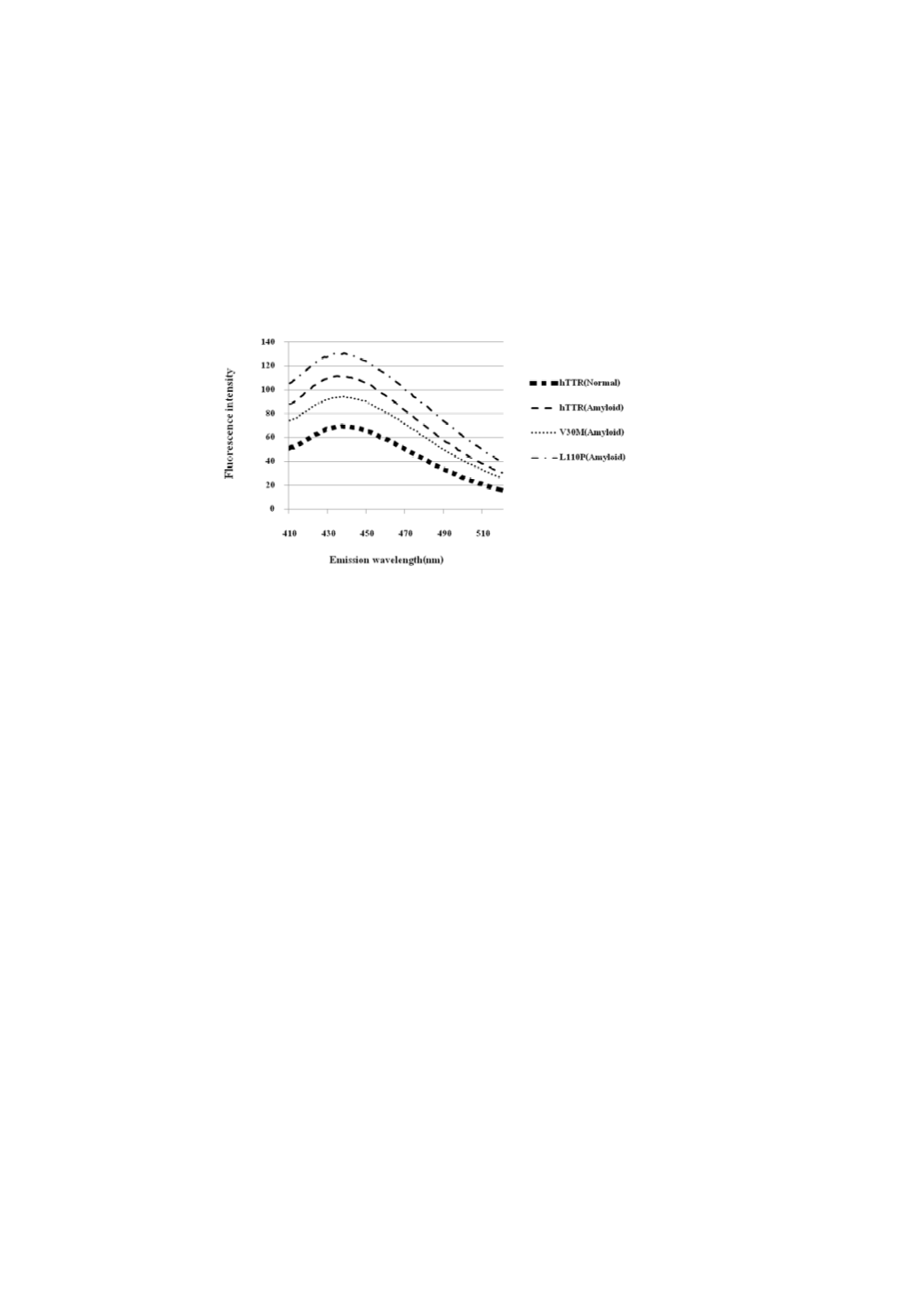
3. Fibril formation of the recombinant L110P
The incubation of the recombinant L110P in an acidic medium (50 mM sodium acetate, pH 4.2) with in the
presence of high salt (100 mM KCl), the formation of fibril could be demonstrated by the interaction with the
fluorescence probe thioflavin T. In comparison, the fibril formation of L110P was slightly higher than V30M,but
much higher than TTR wild type (Figure 4). This should indicate to low stability of the structural conformation, thus,
higher tendency to form aggregate and toxic to cells of L110P.
Figure 4 Fluorescence spectra of TTRs
Human TTR purified from plasma, recombinant V30M and recombinant L110P were diluted in
50 mM sodium acetate, pH 4.2, 100 mM KCl and 0.1 mM EDTA to the final concentration of
0.50
M. Thereafter, the reaction mixture was incubation at 37
o
C in dark for 7 days. The ThT
assay was performed as described in the Methods. The fluorescence emission spectra (410 nm to
520 nm) were recorded at the exciting wavelength at 350 nm.
Conclusion
1.
Recombinant L110P was successfully synthesized and extracellularly secreted by using the heterologous
protein expression system of
Pichia pastoris
, and the protein was extracellularly secreted into culture
medium with the production yield of 0.5 mg/ liter of medium.
2.
After concentration by ultrafiltration, the recombinant protein was effectively purified with a single step of
preparative native-PAGE.
3.
The recombinant L110P produced from
Pichia
showed electrophoresis mobility under native condition
similar to human native TTR, but faster than albumin in plasma.
4.
By Thioflavin-T assay, the fibril formation of the recombinant L110P was demonstrated, and it was high
compared to the native TTR and V30M.


